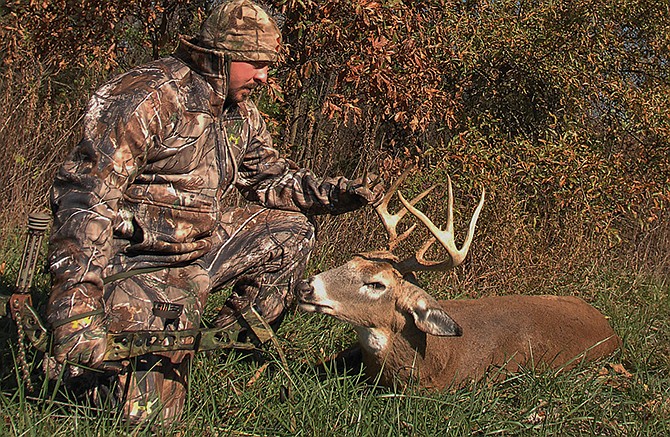As soon as I saw the buck's massive antlers, adrenaline started coursing through my veins.
I could actually feel my predatory instinct turning on and honing in. My vision narrowed. All sound disappeared except for the crunching of leaves under the buck's hooves each time he took a step. My grip tightened and my breathing slowed. I was intensely focused.
Then a puff of wind swirled. The buck caught my scent and in the blink of an eye vanished back into the pine thicket from which he had just emerged. A wave of calm washed over me and the trance was broken.
As I've grown older, I have come to realize being honest with yourself is one of life's greatest challenges. So I sat back down on my seat 20 feet up a tree, and began reflecting on the event that had just transpired.
I asked myself why, after passing up opportunity after opportunity on smaller bucks and does, had this large antlered deer tripped my predatory instinct. Was it the size of his antlers, or the fact he was a mature specimen making him the most challenging deer in the woods to kill?
In his classic book, "Meditations on Hunting," Spanish philosopher José Ortega y Gasset wrote, "To the sportsman the death of the game is not what interests him; that is not his purpose. What interests him is everything that he had to do to achieve that death-that is, the hunt."
I'm torn over this statement. As hunters, we are supposed to be out there in order to put meat on the table. That is how we sell the importance of our tradition to the masses. And putting meat in the freezer absolutely remains the basis of the hunt.
Yet, there is so much more to it. Otherwise, hunters would attempt to fill their tag as soon as possible and be done. What is our psychological tie to the hunt? Why do some feel it, while others do not?
The trophy aspect of deer hunting has significantly impacted hunting as a whole. There is a billion dollar industry devoted to killing trophy bucks. For some, it's an obsession. Their efforts go on all year to prepare for the opportunity to kill a trophy buck each fall. They plant food plots, put out minerals that stimulate antler growth, monitor deer with motion sensor cameras and constantly strategize. It's a never-ending cycle.
And all the while they know the deer they are after can walk onto a neighbor's land and be killed by a guy who only hunts opening weekend of gun season. Fair chase is part of the thrill- part of the "hunt."
But the excitement level is different for the experienced hunter when measuring success by the maturity of the animal. So the trophy aspect has more to it than just the size of the buck's antlers. There is a trophy aspect to the hunt as well as the animal. Once the meat is gone and the antlers have long been hanging on the wall, the memory of the hunt remains as clear and ever-present as the moment years ago when you loosed the arrow or pulled the trigger. The fact mature bucks are rare and elusive lends credence to taking one, making the experience something special.
Two professors from the University of Wisconsin-La Crosse, Robert Jackson and Robert Norton, wrote the, "The 5 Stages of the Hunter." They are, in order: Shooter Stage, Limiting out Stage, Trophy Stage, Method Stage and Sportsman Stage. It's in the final stage when hunters have reached the point of embracing the entire experience. But does measuring success by increasing the challenge fall into that stage. I really don't know, but I'm glad, personally, to be at a point where I'm asking the question.
Good luck deer hunters, and be safe.
See you down the trail ...
Brandon Butler, the executive director of Conservation Federation Missouri, is an outdoors columnist for the News Tribune. Contact him at [email protected].

